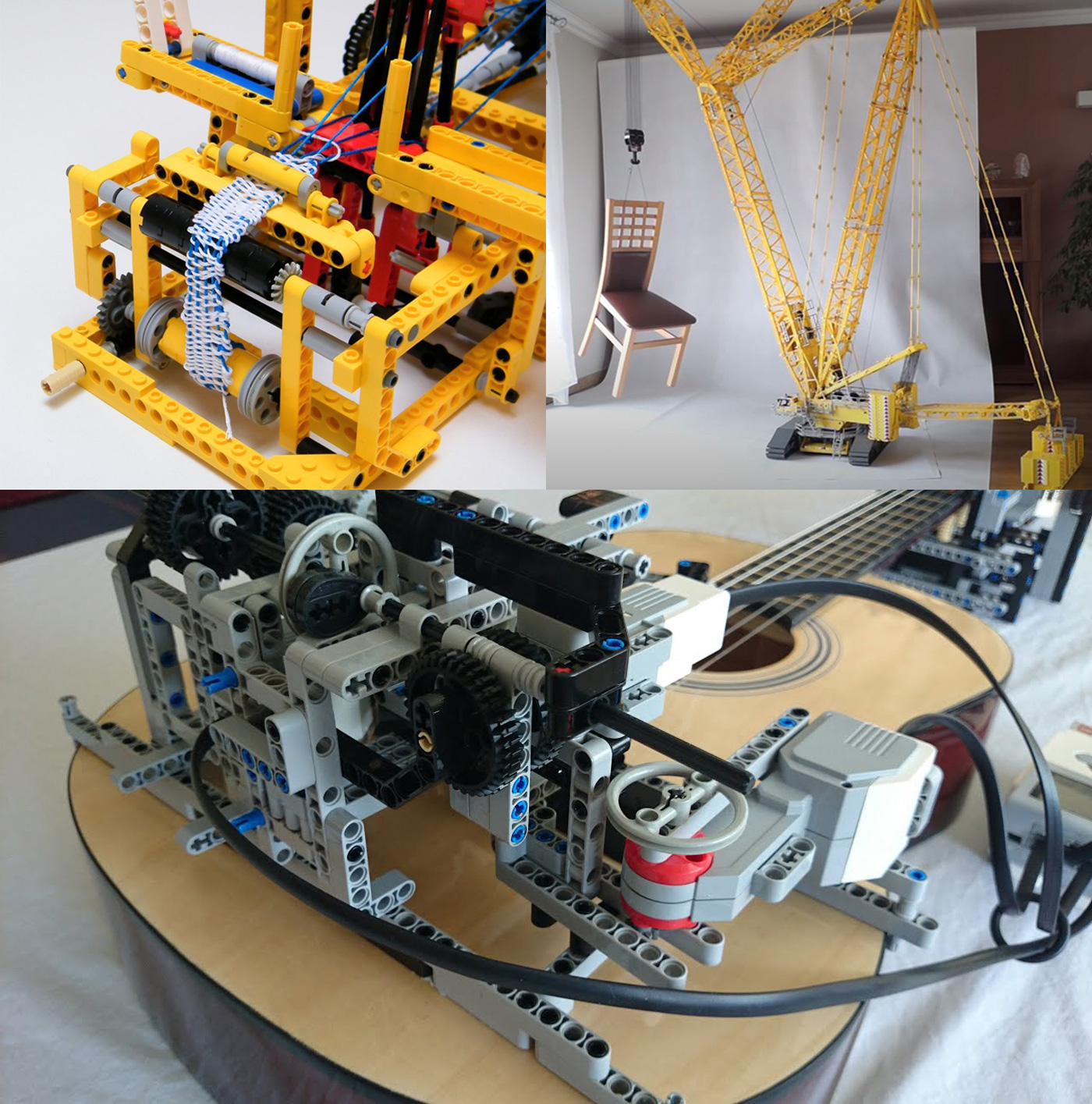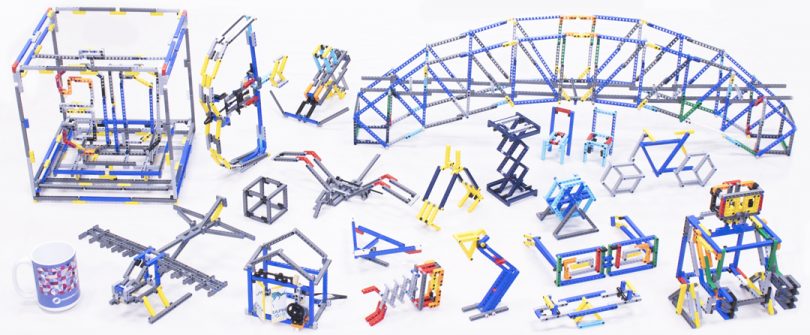The LEGO Technic system was introduced in 1977 as an expert series for building advanced 3D structures that mimic real-world mechanical and automobile models. Compared with basic regular LEGO bricks, which are connected mainly through the studs on top of the bricks, LEGO Technic bricks have a rich variety of types, e.g., beams, axles, pins, and connectors, and are connected via a wide range of joints by means of the pins and connectors. So, the sheer number of assembly varieties leads to an immense design space.
As a result, when exploring the design space for making a new creation, LEGO Technic builders have to mindfully plan the brick arrangement, their connections, and assembly order. Often, small assemblies are first built to test the assembly feasibility via trial-and-error. Given such complexity, manual designs of LEGO Technic models are very tedious and challenging, requiring substantial expertise and time.

LEGO technic models designed by LEGO enthusiasts
AUTOMATING THE DESIGN OF LEGO TECHNIC MODELS
The main goal of this project is to automate the design of LEGO Technic models by means of computer algorithms. In the work, users simply need to sketch the structure of the target models—as we can see the left column in Figure 2. The method can automatically generate coherent LEGO Technic models by planning the brick arrangement and connections, such that the generated models can resemble the input sketches with well-connected bricks, while respecting the intended symmetry and mechanical properties given in the sketches.
There are three key innovations in the algorithm. First, the team mathematically formalize the geometry and connections of various LEGO Technic bricks, as well as model the input sketch and LEGO Technic construction constraints, so that the team can represent and compute them in the algorithm, shown in the guiding graph on Figure 3(b). Then, the team invent a two-stage algorithm by first estimating the local orientation of LEGO Technic bricks in the design, then iteratively optimizing local brick placements to cover the input sketch with the simulating annealing framework. In the end, the working system embeds functions for users to analyse the structural stability and balancing, as well as producing assembly instructions to aid the physical assembly.
THE RESULTS
The working system enables us to create a large variety of LEGO Technic models. Overall, the computation time varies from a few seconds (small-sized models) to a few minutes (larger models with a thousand bricks). Figures 4 and 5 show various LEGO Technic models generated by the method. The models have varying size, shape, structure, and functionality. Particularly, the physical assemblies exhibit coherent connections between bricks and demonstrate the quality of the results.
This project is a collaborative work of Prof Fu with students Hao XU and Ka-Hei HUI, and also Prof. Hao (Richard) ZHANG from Simon Fraser University.

3D renderings for three generated LEGO technic models
A FOLLOW-UP WORK
Very recently in August 2020, one of the co-authors “Hao XU” adopted the LEGO computing framework for another project, where the adopted method can automatically generate LEGO avatars from single portrait images. The team recently won the championship in the DeeCamp 2020 competition, which is one of the largest AI project camps in China held by Sinovation Ventures.
In the future, the team plan to further extend our method for generating assembly-based constructions with details, e.g., architecture, mechanical devices, and furniture. Particularly, the team are investigating AI and deep-learning approaches, aiming to learn to generate object assemblies that are not only visually pleasing, but also structural stable, simple, and functional.
This project is funded by the Hong Kong Research Grants Council and recently featured in ACM SIGGRAPH Asia 2019 Technical Paper program. See the featured article here.
Further, the team conducted various experiments to evaluate and analyse the performance of the method and compared the results with human designs. To see more project results, including a presentation video and the computer method details, visit the following project website.
This article is written by:
CHI-WING FU, PHILIP
Prof Fu received his B.Sc. and M.Phil. degrees in Computer Science and Engineering from CUHK, and his PhD degree in Computer Science from Indiana University in Bloomington. He received the IEEE Transactions on Multimedia Prize Paper Award in 2005.
His research interests include computer graphics, visualization, computation fabrication and HCI (user interaction). He serves as associate editor of IEEE Computer Graphics & Applications (CG&A) from 2020.











